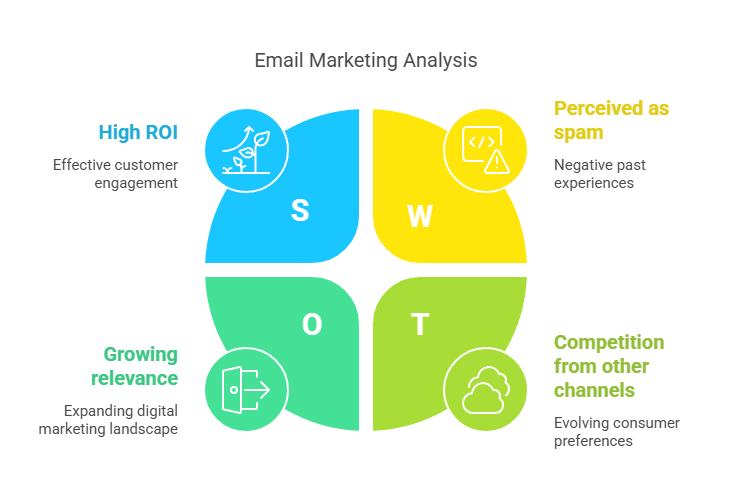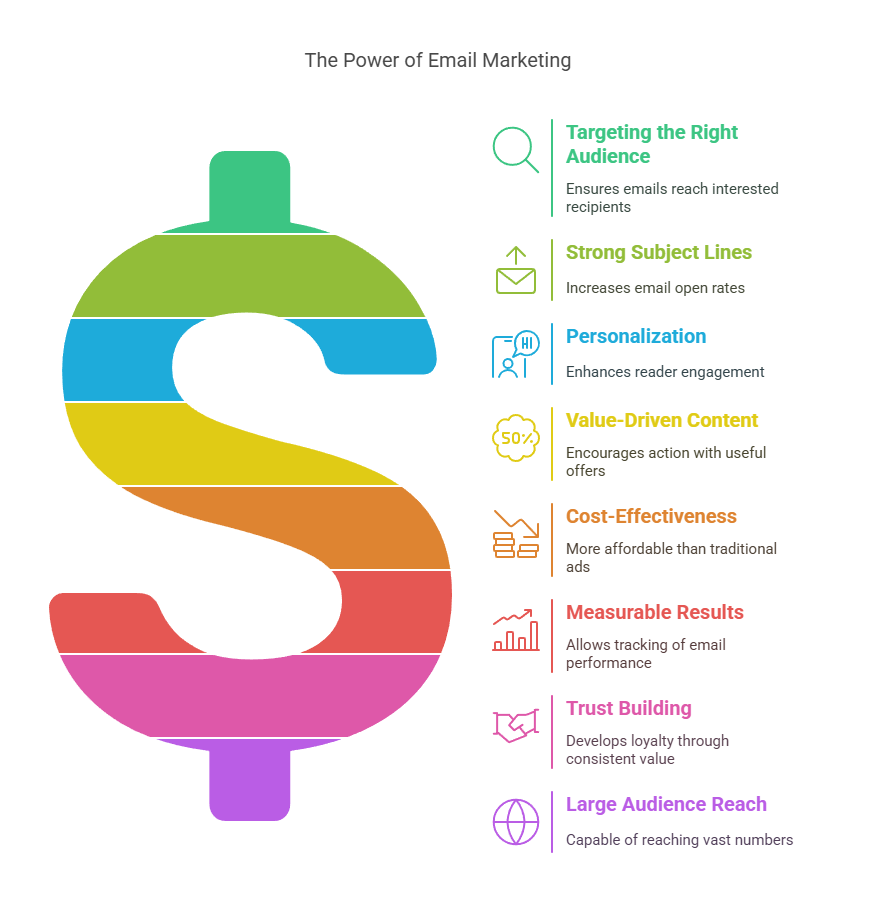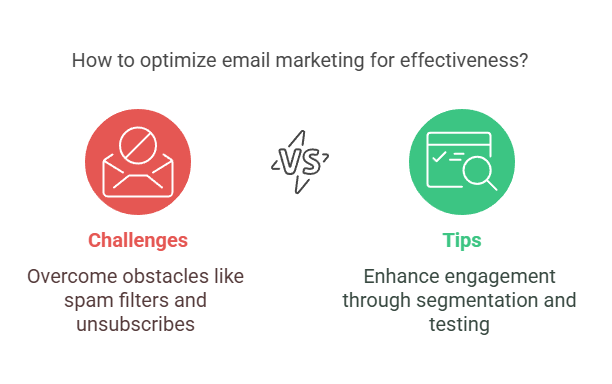Email marketing is one of the oldest methods of digital marketing. But many people still wonder: Is email marketing legit? Does it really work? Or is it just another trend that will fade away? In this article, we will answer these questions and provide a clear explanation of email marketing’s power.
What Is Email Marketing?
Email marketing is the practice of sending emails to a group of people to promote a product, service, or idea. It involves sending messages directly to a person’s inbox. Businesses use email marketing to build relationships with customers, provide valuable content, and encourage actions like making a purchase.
Email marketing is not just about sending advertisements. It is about creating communication that adds value to the recipient. With the right strategy, email marketing can be very effective for businesses of all sizes.
Why Do People Ask, “Is Email Marketing Legit?”
Many people question the legitimacy of email marketing because they have heard bad things about it. Some think it is spam or an outdated method of reaching people. Others might have tried it in the past and didn’t see good results. These doubts are normal, but email marketing is still very much relevant today.
Statistics show that email marketing has one of the highest returns on investment (ROI) compared to other marketing methods. According to the Data & Marketing Association, email marketing can provide up to $42 for every $1 spent. This shows how powerful and legitimate email marketing can be when done correctly.
Is Email Marketing Effective?
Yes, email marketing is very effective when used properly. According to the 2023 Email Marketing Benchmark Report, businesses that use email marketing see an average ROI of 3800%. That means for every dollar spent, they earn back $38.
“Email marketing has one of the highest returns on investment (ROI) among all marketing strategies”, says the DMA’s research report.
The effectiveness of email marketing depends on several factors:
-
Targeting the right audience: You need to send emails to people who are interested in your product or service.
-
Creating a strong subject line: The subject line is the first thing people see. A good subject line increases the chances of the email being opened.
-
Personalization: Emails that are personalized are more likely to be read. People enjoy content that speaks directly to them.
-
Value-driven content: Offering something valuable in the email, like discounts or helpful tips, will encourage people to take action.
When these elements are combined, email marketing can help businesses grow and build long-lasting customer relationships.
The Benefits of Email Marketing
-
Cost-Effective: Email marketing doesn’t require a big budget. It’s cheaper than many other advertising methods like TV or radio ads.
-
Easy to Measure: With email marketing, you can track everything. You know how many people opened your email, clicked a link, or made a purchase.
-
Builds Trust: By sending helpful content, you can build trust with your audience. Over time, they will start to trust your brand and become loyal customers.
-
Easy to Reach Large Audiences: With email marketing, you can reach thousands, or even millions, of people in one go.
Challenges of Email Marketing
While email marketing is very effective, it does have some challenges. You need to be careful about the following:
-
Spam Filters: Emails may end up in spam folders if not written properly.
-
Unsubscribes: Some people will unsubscribe from your emails. It’s important to have a strategy to reduce unsubscribes.
-
Too Much Email: Sending too many emails can annoy your audience. You must find the right balance.
Despite these challenges, many businesses continue to use email marketing because the benefits outweigh the risks.
How to Make Email Marketing Work for You
If you want to succeed in email marketing, here are some tips:
-
Build a quality email list: Make sure the people you’re emailing are interested in your content.
-
Segment your audience: Group people based on their interests and send them personalized emails.
-
Test your emails: Always test different versions of your emails. See what works best.
-
Use a strong call to action: Encourage people to take action, whether it’s clicking a link or buying a product.
With the right strategy, email marketing can be a powerful tool for your business.
Is Email Marketing Spam?
One common concern is whether email marketing is spam. The answer is no, email marketing is not spam if done right. Spam is unsolicited, irrelevant, or unwanted email sent to many people. Email marketing, however, involves sending relevant content to people who have agreed to receive it.
As long as you get consent from the people on your email list and provide value to them, you are not spamming them. It’s important to respect your audience and only send emails they will find useful.
How to Avoid Spam in Email Marketing
-
Get Permission: Always ask for consent before sending emails. This can be done through a signup form on your website or through a subscription option.
-
Follow the Law: Email marketing must follow laws like the CAN-SPAM Act in the United States. These laws require businesses to include an unsubscribe option in every email.
-
Provide Value: Always offer something valuable to your subscribers. This will keep them engaged and reduce the chance of them marking your email as spam.
By following these steps, you can avoid being seen as spam and build a positive relationship with your email subscribers.
Common Myths About Email Marketing
There are several myths about email marketing that need to be debunked:
-
Myth 1: Email Marketing is Outdated – While new digital marketing trends come and go, email marketing remains a highly effective strategy.
-
Myth 2: People Don’t Read Emails Anymore – Studies show that the average person checks their email multiple times a day. People still read emails, especially if the content is relevant.
-
Myth 3: Email Marketing Is Expensive – It’s actually one of the most cost-effective marketing methods available.
By understanding these myths, you can better navigate the world of email marketing.
FAQs About Email Marketing
-
What is the best time to send marketing emails? The best time to send emails depends on your audience. However, research suggests that Tuesday, Wednesday, and Thursday mornings tend to have the highest open rates.
-
How often should I send marketing emails? Sending one or two emails per week is a good starting point. Avoid overwhelming your subscribers with too many emails.
-
Can I send marketing emails to people who didn’t sign up? No, it’s important to only send marketing emails to people who have given their consent.
-
How can I improve my email open rates? You can improve your open rates by writing compelling subject lines and segmenting your email list to send more relevant content.
-
What tools can I use for email marketing? There are many tools available, such as Mailchimp, Sendinblue, and Constant Contact, to help you manage and send your email campaigns.
Latest Statistics on Email Marketing
-
According to a 2023 report by Campaign Monitor, email marketing has an average open rate of 18.0%. This shows that people still pay attention to their emails.
-
A study by Litmus revealed that email marketing drives a higher ROI than social media ads, with 81% of companies claiming that email is their biggest revenue-generating channel.
Final Thoughts on Email Marketing
Is email marketing legit? Absolutely. Email marketing remains one of the most powerful tools for connecting with customers. When done right, it offers a high return on investment, builds trust, and nurtures lasting relationships with your audience. By understanding the benefits, challenges, and strategies for success, businesses can use email marketing to drive growth and success.




